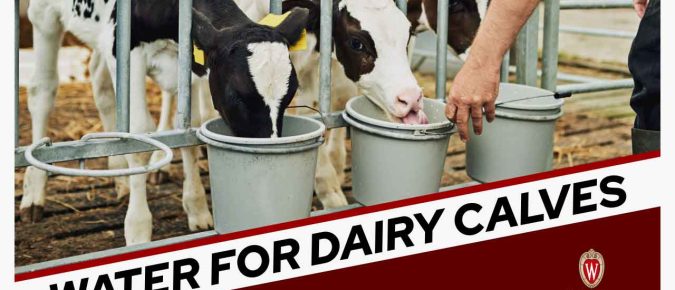Much research is taking place on how heifer grazing can fit into the modern dairy farm. Virtual fencing is also becoming more popular. This presentation will cover what you need to know to incorporate virtual fencing into an operation.
Reducing enteric methane emissions from dairy cattle” showing an overall of the project objectives, our efforts in collecting methane data in research and commercial farms, some traits definitions, and preliminary results on methane prediction using milk spectra data. Guillermo Martinez Boggio, Post Doctoral Research Associate at UW-Madison, is the featured speaker
UW-Madison Division of Extension Livestock Program facilitated a discussion on Oct 30, 2024, about official identification of cattle using electronic ID and the importance of livestock premises registration.
Elegir animales para su granja es una de las decisiones más importantes que puede tomar para mejorar la rentabilidad a largo plazo.
Durante más de medio siglo, se ha adoctrinado a los productores de leche en el uso de la regla A. M. / P. M. para la inseminación artificial (IA) del ganado lechero. En esencia, la regla A. M. / P. M. dicta que una vaca debe ser inseminada artificialmente 12 horas después de haber sido observada en estro (celo). Si una vaca se ve en celo en la mañana, debe ser inseminada artificialmente en la tarde y, a la inversa: las vacas en estro en la tarde deben ser inseminadas artificialmente a la mañana siguiente.
Estrés Térmico en Terneros Lecheros: Avances Actuales y Estrategias de Prevención Presentador Resumen Presentador Dr. Jimena Laporta Profesora asistente e investigadora en fisiología de la lactancia del departamento de Ciencias animales y lecheras Universidad de Wisconsin – Madison Resumen El estrés térmico es una amenaza constante para la salud y el bienestar de los terneros […]
The importance of the water and how by providing warm water for calves, especially in colder weather, can benefit rumen development, increase starter intake, and weight gain, and growth performance.
Estrategias para mejorar el desempeño y manejo reproductivo Presentador Resumen Presentador Dr. Julio Giordano Profesor del departamento de Ciencias animales Universidad de Cornell Resumen La reproducción es un pilar fundamental en la producción lechera. Un buen manejo reproductivo se traduce en un mayor número de partos, un intervalo calórico más corto y, en última instancia, […]
Herramientas prácticas para decisiones críticas de óptimo manejo en ganaderías lecheras Presentador Resumen Summary (English) Presentador Dr. Víctor Cabrera Profesor y especialista en Extensión de gestión de fincas lecheras Universidad de Wisconsin – Madison Resumen La toma de decisiones en una ganadería lechera es crucial para optimizar la producción, mejorar la salud animal y aumentar […]
Enfermedades metabolicas en las vacas lecheras Presentador Resumen Presentador Dr. Eduardo Rico Profesor asistente de Medicina poblacional, Agricultura sostenible y Seguridad alimentaria Universidad de Pennsylvania, facultad de Medicina Veterinaria Resumen La cetosis es una enfermedad que afecta a las vacas lecheras después del parto. Se caracteriza por un déficit de energía en el cuerpo, lo […]
La importancia de una adecuada aplicación y manejo de productos de salud animal en el ganado bovino Presentador Resumen Presentador MSc Alison Pfau Educadora regional bilingüe de sistemas de producción lecheros Universidad de Wisconsin – Madison, División de Extensión Resumen La salud animal es un aspecto fundamental en la producción ganadera. Los productos de salud […]
Ordeños robotizados: claves para un buen manejo Presentador Resumen Presentador Ximena Alcaraz Asesora de sistemas de producción lecheros DeLaval Dairy Services Resumen Los ordeños robotizados son una tecnología innovadora que está revolucionando la industria lechera. Estos sistemas automatizados ofrecen numerosos beneficios, como una mayor eficiencia, una reducción del estrés para las vacas y una mejora […]











